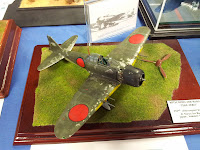As I said in a previous post, people build for different reasons. When there’s debate about different styles, it’s usually derogatory, with “rivet counters” on one side, and whatever the other guys are called on the other. Too bad, I think that’s the wrong attitude- I think we should be able to appreciate all kinds of styles.
The builds going on here are two good examples of differing styles. Panagiotis is a freak, and I mean that in a good way! He’s what I would call a Technician, and having followed several of his builds, it’s easy to see he’s developed a style and a method that works for him to produce an incredible amount of detail- he’ll have something that’s totally unique, and totally his own.
I consider myself more of a Craftsman. I get my enjoyment working with difficult kits and figuring out solutions. I’ve also figured out a system that works for me, and in the end gives me something totally unique and totally my own- I’ve never seen a 1/48 Mavis, either in person or online!
Today’s update is a good example of figuring out a solution, how to attach the tail. The vacuform kit is a smooth fuselage, with no indication of where the tail mounts- locating pins? What are those???
As you can see in the picture, first step was to saw off the top of the tail. The tail feathers are all flat pieces, with faint scribing for the moving surfaces. All those were cut out and built up, with beveled edges so they slot together cleanly when reassembled. The half circle cutouts on the tail are for clearance for the sprue spars.
Same procedure for the vertical surfaces. Slots were cut in the top of the horizontal stabs, then triangles of scrap were glued in through them to the bottom surface. The fins were filled with Milliput and squished over the triangles and glued down.
The second picture shows it just set into place. The fit is as good as you make it, and I take pride in doing what few others attempt.
When I’m not working on the big pieces, I like to set them up, keeps me motivated to keep going!
WIP#1,
WIP#2
I absolutely agree with you Mark. Personally I find all the models on this blog (except mine) at least inspirational and a challenge for every one of us to do better. Even though they are certainly intimidating, I've never considered Panagiotis's models to be the "ultimate" on any subject and certainly not prohibitive for someone else to try. On the contrary I think they offer plenty of ideas as to what is possible just as your excellent Mavis does. So do keep up the good work!

























.jpg)
































